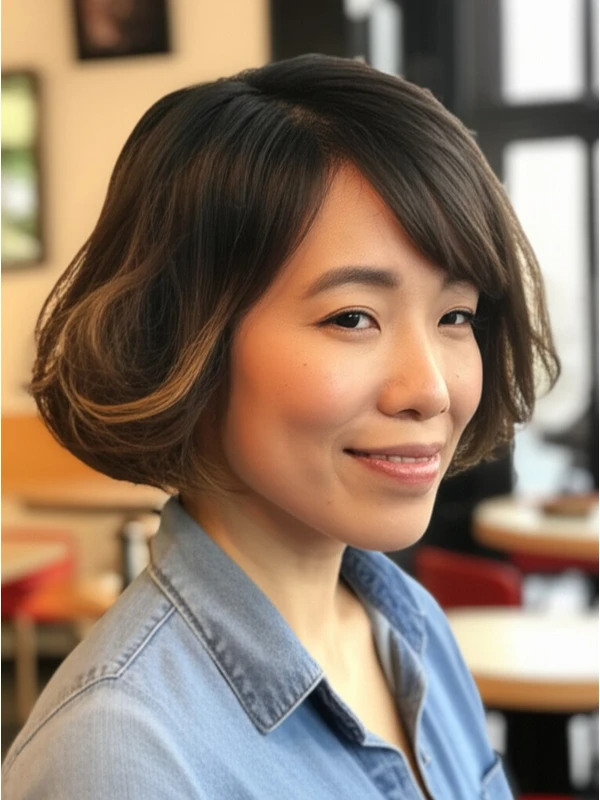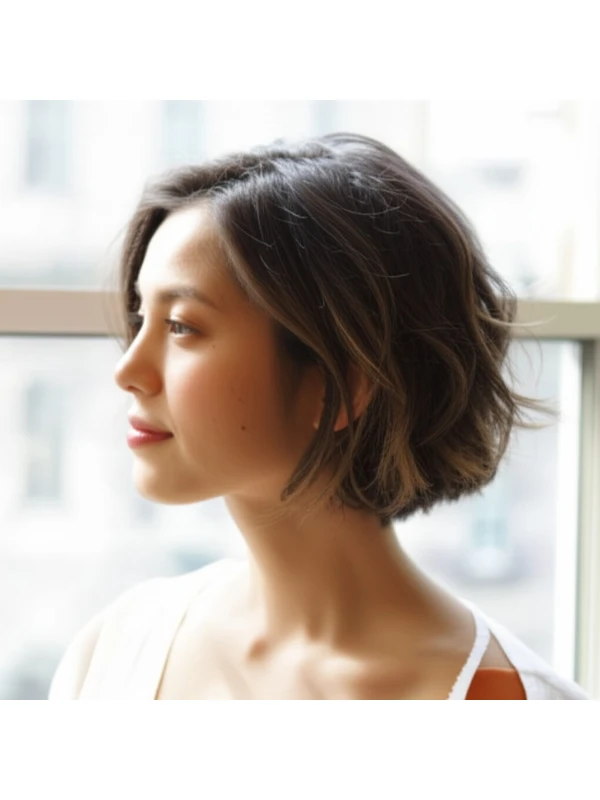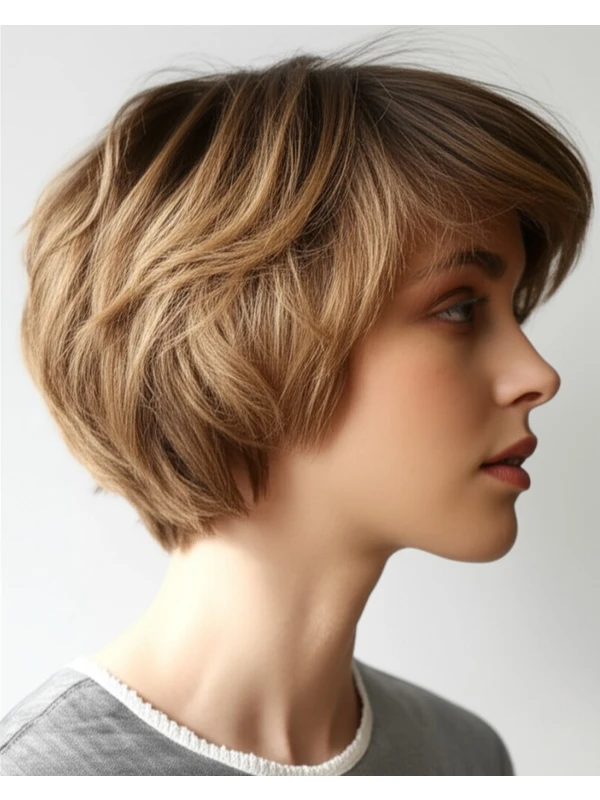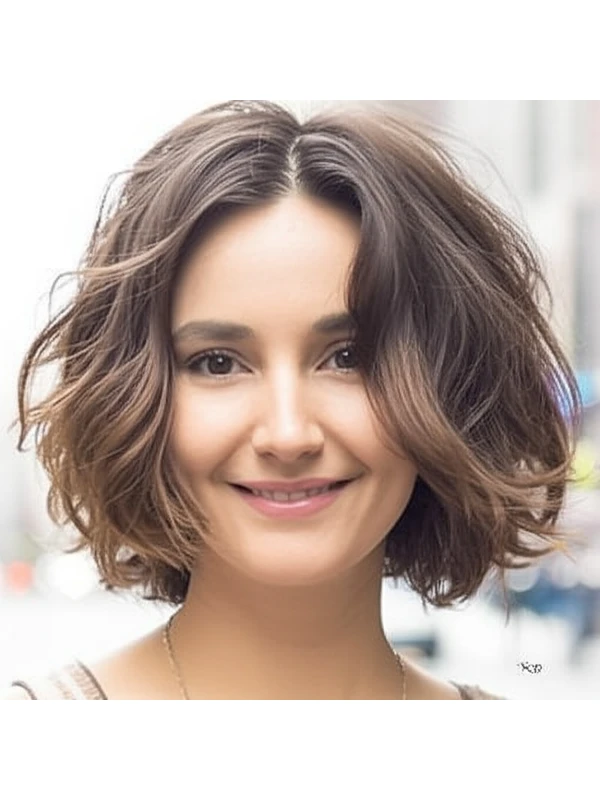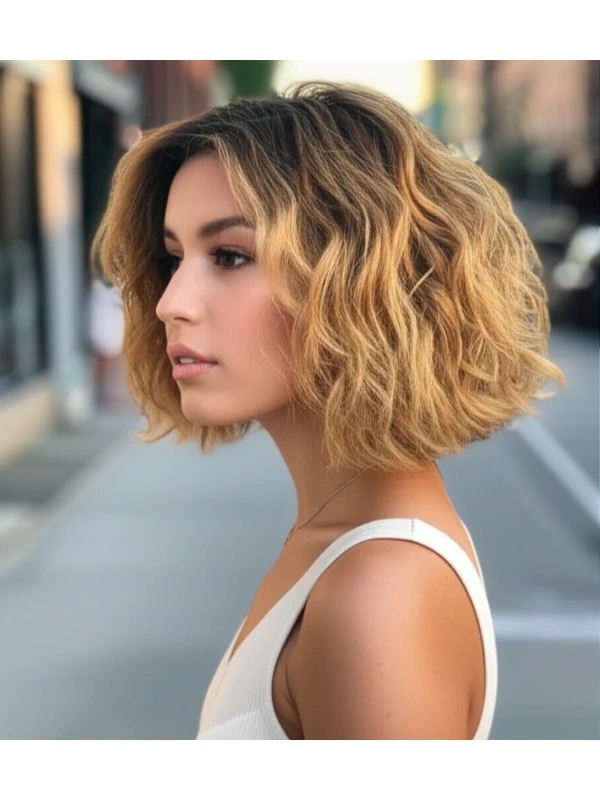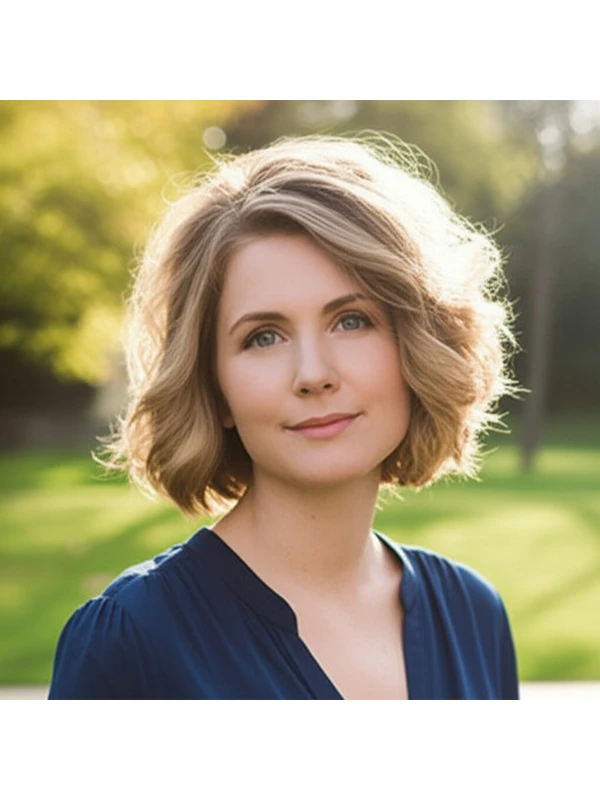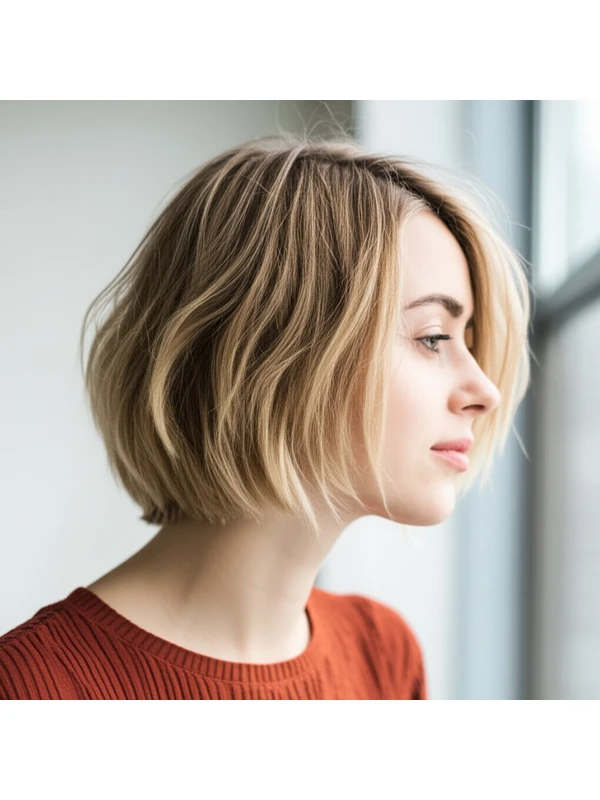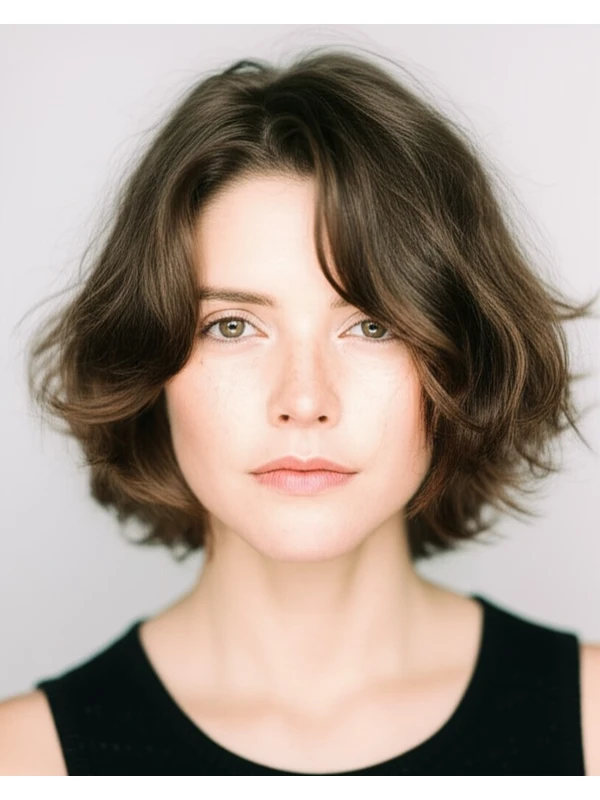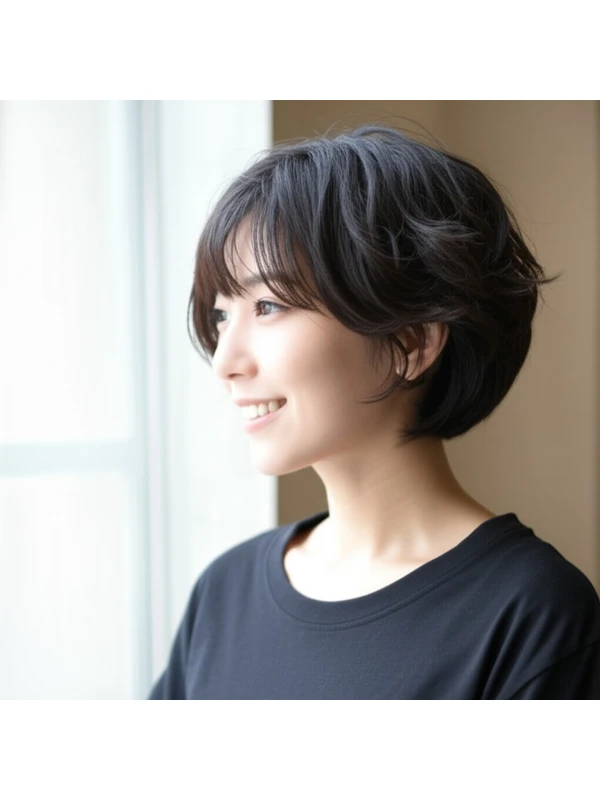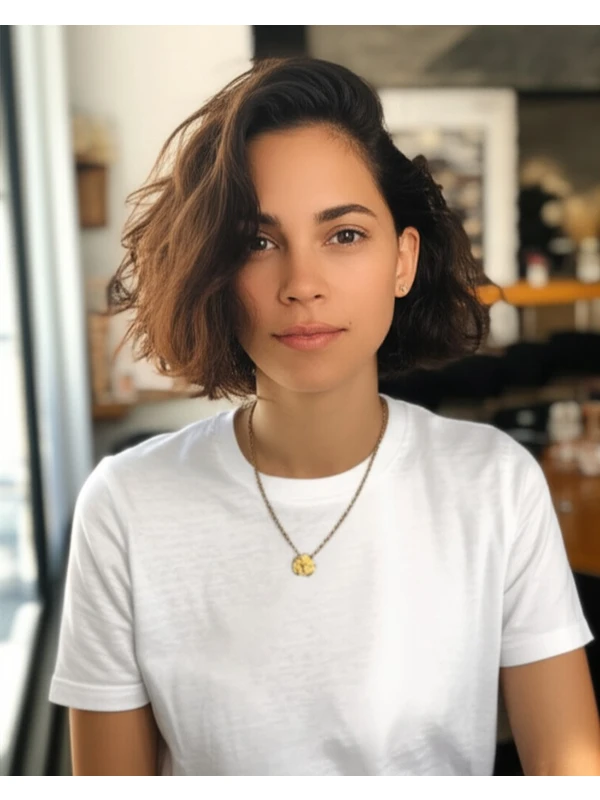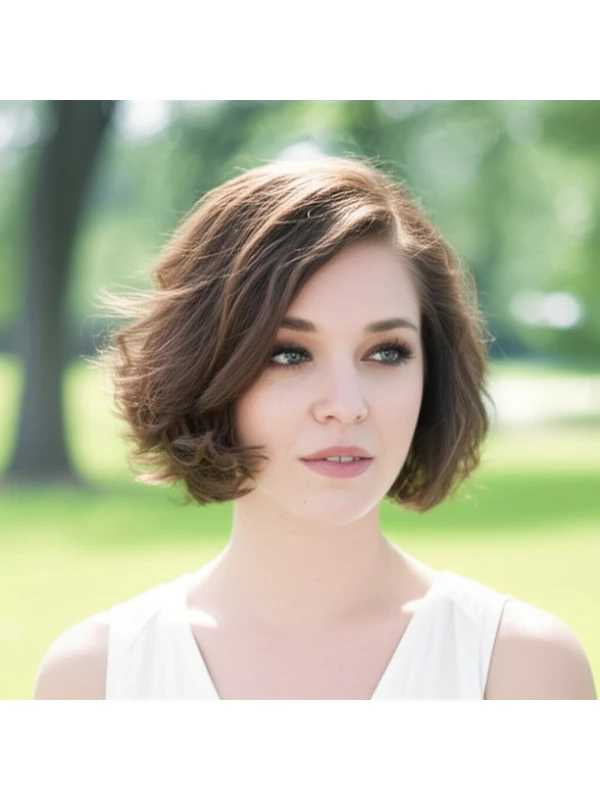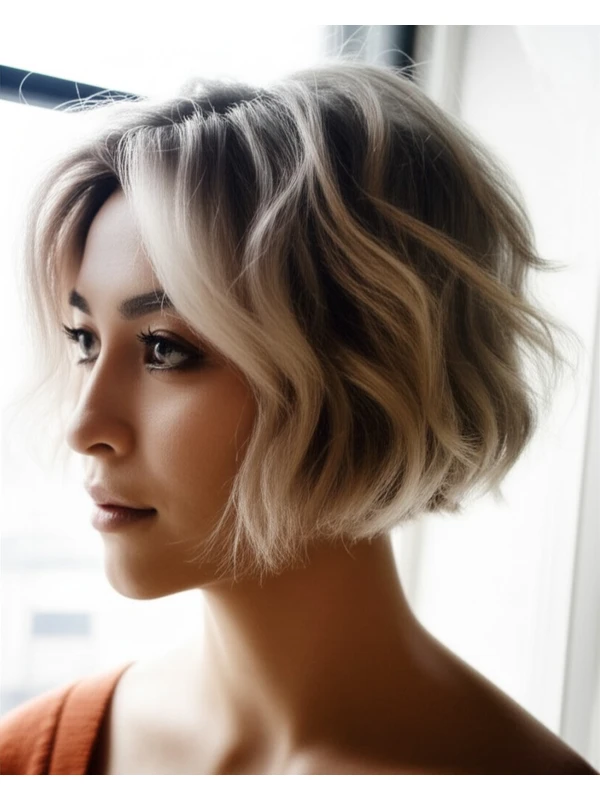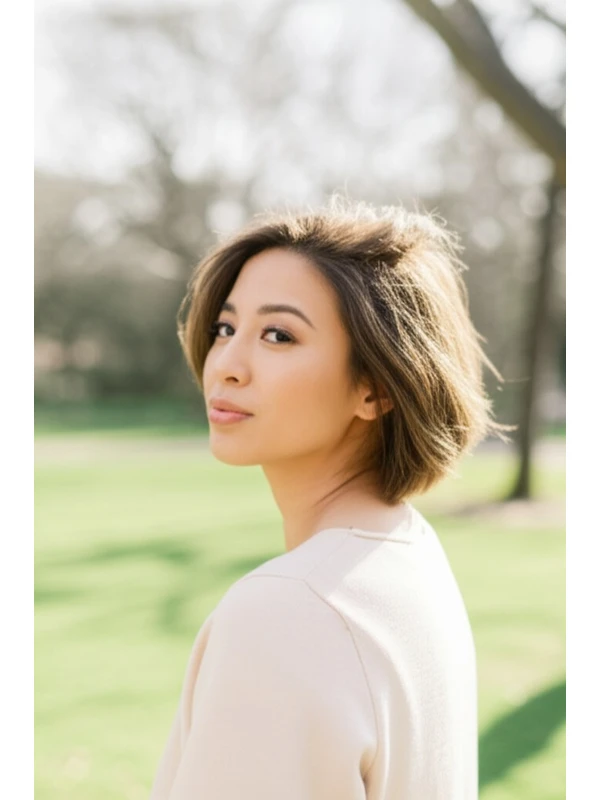#The Chin-Length Bob: A Style Guide for Every You
The chin-length bob is a classic hairstyle that consistently returns to popularity – and for good reason! It's flattering, versatile, and can be adapted to suit almost any face shape, hair type, and personal style. This guide will break down everything you need to know about rocking this iconic look.
#1) Background & Definition: What is a Chin-Length Bob?
The chin-length bob (often simply called "the bob") is a haircut where the shortest layer falls around your chinline. It's characterized by its blunt or softly layered ends, creating a clean and polished appearance. Think Audrey Hepburn – that’s a quintessential example!
- Geometry: The cut generally involves layers that gradually increase in length from front to back, though this can be subtle or more dramatic depending on the desired look.
- Length Range: Typically falls between 3-5 inches below the chin. Slight variations are common and depend heavily on face shape and hair texture.
- Key Features: Clean lines (or soft layers), a defined silhouette, and versatility in styling.
- Alternative Names: "Classic Bob," "Jawline Bob," “Wob” (when it's wavier).
#2) Face Shape Fit: Finding Your Flattering Angle
The chin-length bob can work wonders for many face shapes, but strategic adjustments are key!
- Oval Faces: Lucky you! This style is incredibly flattering. Keep the lines clean and sharp or add soft layers to enhance natural features. A side part adds asymmetry and interest.
- Fringe Options: A blunt, eyebrow-grazing fringe can be chic; a wispy, textured fringe softens angles.
- Round Faces: The bob helps elongate the face. Avoid overly rounded shapes – opt for more angular lines or subtle layering to create verticality. Volume at the crown is your friend!
- Fringe Options: A side-swept fringe breaks up roundness and draws attention upwards. A full, blunt fringe can make a round face appear wider.
- Square Faces: Soften those angles! Layering around the jawline softens the squareness. Avoid severe lines that accentuate angularity.
- Fringe Options: A textured, piecey fringe or soft curtain bangs soften a strong jawline.
- Heart-Shaped Faces: The bob balances a wider forehead and narrower chin. Volume at the sides will help create balance.
- Fringe Options: A wispy, feathered fringe helps to visually widen the forehead.
- Diamond Faces: Similar to heart shapes, the bob softens angles. Side parts add asymmetry and interest.
- Fringe Options: Soft, side-swept bangs or a textured curtain bang work well.
- Oblong (Long) Faces: The bob adds width. Avoid styles that are too long as they'll only elongate your face further. Volume at the sides is essential.
- Fringe Options: A blunt fringe can help shorten the appearance of a longer face, but ensure it’s not overwhelming.
#3) Body Proportions & Height Guidance: Tailoring to Your Silhouette
The bob isn't just about your face – consider your overall body shape!
- Petite: A shorter chin-length bob (closer to 3 inches below the chin) prevents you from looking overwhelmed.
- Average Height: Most lengths work well; experiment with volume and layering.
- Tall: You can handle a slightly longer bob (up to 5 inches), which adds visual weight.
- Narrow Shoulders: Create volume at the sides of the head through layers or styling techniques. A side part also broadens shoulders visually.
- Broad Shoulders: Keep the style relatively streamlined and avoid excessive volume on top, as this can accentuate shoulder width.
- Short Neck: Avoid bobs that are too blunt and severe; opt for soft layering to elongate the neck. A slightly longer bob (closer to 5 inches) might be more flattering than a very short one.
- Long Neck: A chin-length bob with volume at the crown visually reduces the length of your neck.
#4) Works Best With Hair Types & Densities: Texture Talk
The beauty of this cut is its adaptability, but understanding your hair’s behavior is crucial.
- Straight Hair: Looks sleek and polished. Can handle blunt lines well.
- Wavy Hair: The bob enhances natural waves! Consider a slightly longer length to allow for wave definition.
- Curly/Coily Hair: A chin-length bob can be incredibly chic, but shrinkage is key to consider. What looks like a chin-length cut when dry will shrink significantly when wet or air-dried. Consult with your stylist about the "shrinkage factor" for your curl pattern (typically 25%-75%).
- Fine Hair: Layers add volume and movement, preventing it from looking flat. A blunt cut can make fine hair appear thicker.
- Medium Hair: The bob is a great universal choice!
- Thick Hair: Layering is essential to remove weight and prevent the bob from appearing bulky. Thinning shears might be used for even more lightness.
#5) Styling Variations: From Sleek to Textured
This cut’s versatility shines in styling options!
- Sleek vs. Textured: A sleek bob uses a smoothing serum or oil, while a textured bob embraces natural waves and movement with texturizing products.
- Middle vs. Side Part: A middle part offers symmetry; a side part adds asymmetry and volume.
- Fringe Variations: Blunt, wispy, feathered, curtain bangs – the possibilities are endless!
- Occasion Styling:
- Casual: Air-dried with minimal product for effortless cool.
- Office: Sleek and polished with a smoothing serum.
- Evening: Add waves or curls using hot tools; consider adding hair accessories.
#6) Maintenance: Keeping Your Bob on Point
Regular trims are essential!
- Trim Cadence: Every 6-8 weeks, depending on growth rate and desired shape.
- At-Home Routine: Gentle shampoo & conditioner, leave-in conditioner (especially for curly/coily hair).
- Heat vs. Air-Dry: Air drying is healthier; use heat sparingly with a protectant spray.
- Product Checklist:
- Shampoo and Conditioner suited to your hair type.
- Leave-in conditioner (essential for dry or textured hair)
- Heat Protectant (if using hot tools)
- Smoothing Serum/Oil (for sleek styles)
- Texturizing Spray/Cream (for textured styles)
- Finishing Hairspray (optional, for hold).
- Estimated Daily Styling Time: 5-20 minutes, depending on desired style and hair texture.
#7) Grow-Out Roadmap: Evolving Your Look
The bob doesn't have to be static!
- Months 1-3: The shape is most defined. Maintain with trims.
- Months 3-6: You can start experimenting with slightly longer lengths or more layers. This phase often leads to a "lob" (long bob).
- Maintaining Shape: Between cuts, use styling products and techniques to keep the lines clean and prevent excessive growth at the face.
#8) Color Pairings: Enhancing Your Bob
Color can dramatically elevate this style!
- Cool Undertones (pink, blue): Ashy blondes, cool browns, or even a subtle lavender hue.
- Warm Undertones (yellow, gold): Honey blondes, caramel highlights, copper tones.
- Low-Commitment Options: Balayage/highlights add dimension without a full color change. Root smudging creates a softer grow-out.
#9) Season & Occasion Guide: Adapting to the Moment
- Spring/Summer: Lighter colors, textured styles, air-dried looks.
- Fall/Winter: Richer tones (chocolate browns, deep reds), sleek and polished styles.
- Work: Classic and professional – a smooth bob with minimal fuss.
- Weddings/Parties: Glamorous waves, updos incorporating the bob's length, or statement hair accessories.
#10) Cost & Time: Salon Investment
- Salon Time: Typically 45-90 minutes for a first cut; shorter for trims.
- Estimated Price Range: Varies greatly by location and stylist experience – expect to pay more at high-end salons.
#11) Pros & Cons: The Fine Print
Pros: Versatile, flattering on many face shapes, relatively low maintenance (with regular trims), classic style. Cons: Requires frequent trims, can look awkward during the grow-out phase if not styled correctly, may require more styling time than longer styles for certain textures.
#12) Salon Consultation Script: Your Questions Answered
Here are some prompts to help you communicate your vision to your stylist:
- “I’m interested in a chin-length bob. Can we discuss what length would be most flattering for my face shape?”
- "How can we incorporate layers to work with my hair texture (straight, wavy, curly)?"
- "What styling products and techniques do you recommend for maintaining the shape between cuts?"
- “I’m not sure about a fringe. Can we explore different fringe options that would complement my face?”
- "Can you show me examples of bobs on people with similar hair types/densities to mine?"
#FAQs: Your Burning Questions
- Will a chin-length bob make my face look wider? It can, if not styled correctly. Strategic layering and volume placement are key to balancing facial features.
- How do I prevent my bob from looking blunt? Soften the edges with layers or point cutting (where the stylist snips into the ends at an angle).
- Can a chin-length bob work on very thick hair? Absolutely! Layering is essential to remove weight and create movement.
- What if I want to grow my bob out? How do I maintain it in between cuts? Communicate with your stylist about the desired length, and use styling techniques (like curling or pinning) to disguise the awkward stages.
- Is a chin-length bob suitable for fine hair? Yes! Blunt lines can create the illusion of thickness.
- How do I style a chin-length bob if my hair shrinks significantly when it dries? Consult with your stylist about length and layering, factoring in shrinkage. Embrace your natural texture – air drying is often best!

